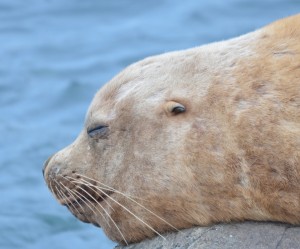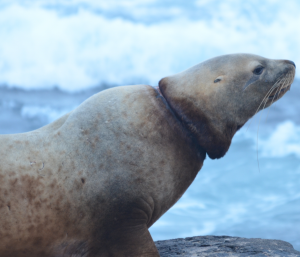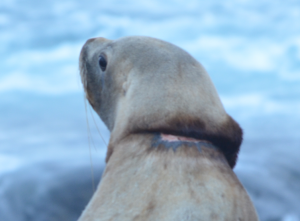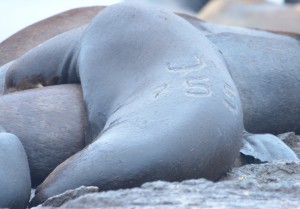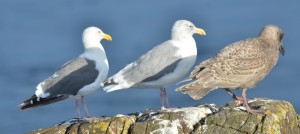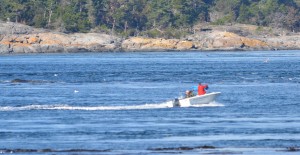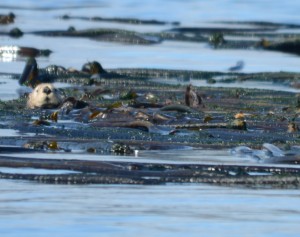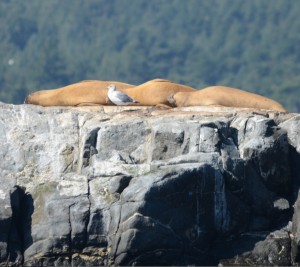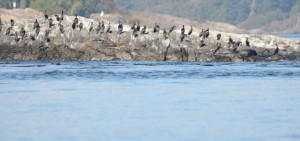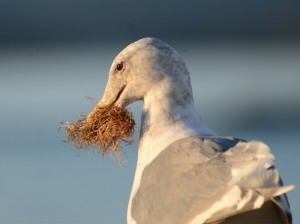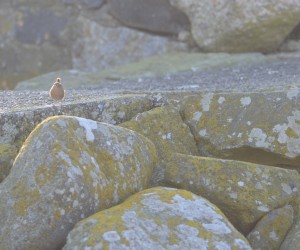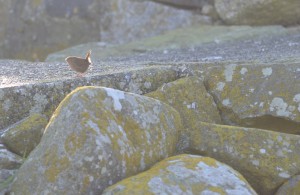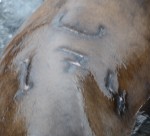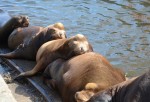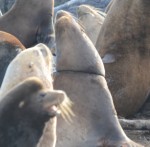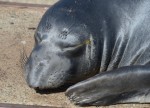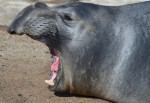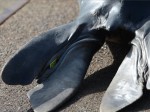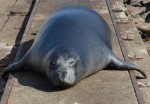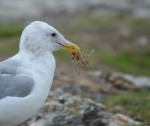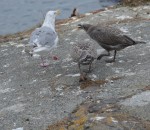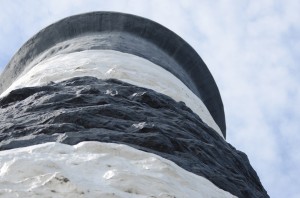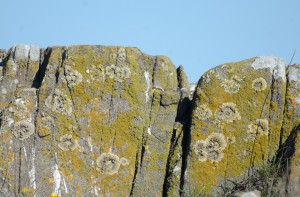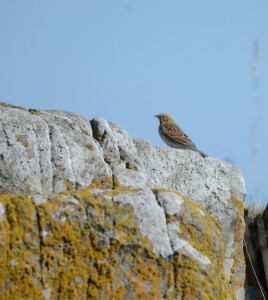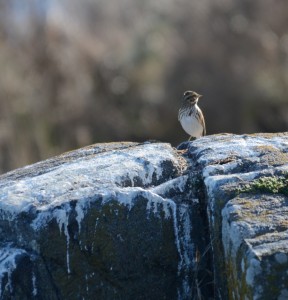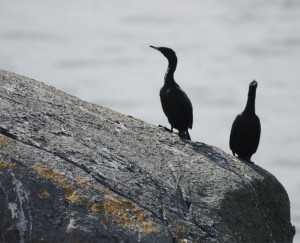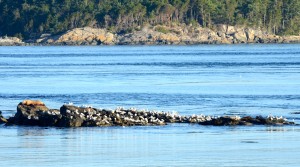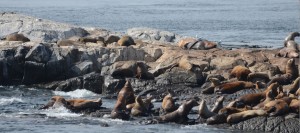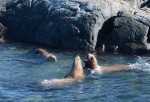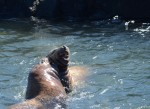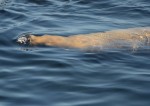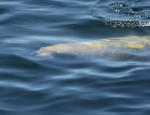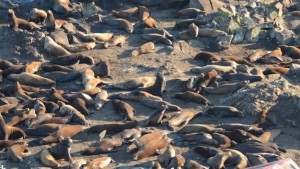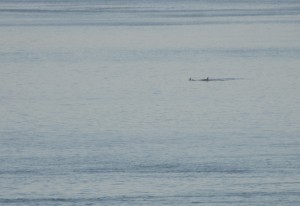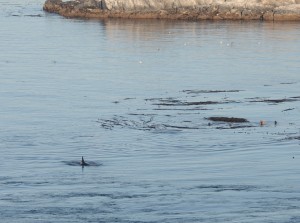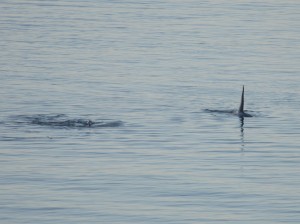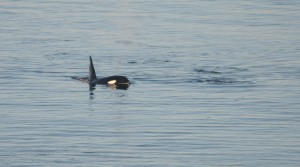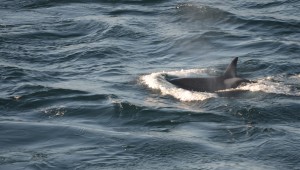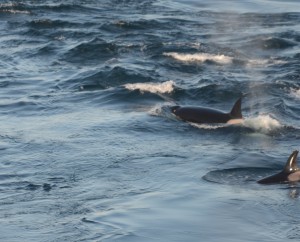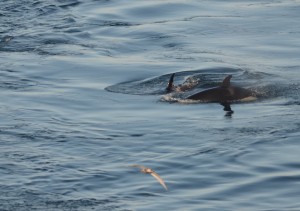Thanksgiving Monday was a wet day dominated by light north-northeast winds in the morning and a moderate westerly in the afternoon. Wind speed was 10 or less knots until it turned to west. By early evening it had risen to 15 – 20 knots. The barometer fell early and has been climbing since late morning boding better weather tomorrow. The wind is forecast to drop after midnight and switch to light easterlies for Tuesday. Forecasters expect a mix of sun and cloud with fog patches dissipating in the morning. A brighter day expected.
Seven whale watching vessels visited in the morning and none in the afternoon and the three pleasure craft that passed through were also in the morning.
On wet days, it seems as if the sea lions spend more time in the water although there are pockets of Californians (on the cairns, for example) that stayed put, hauled out all day. The rock-climbers also stayed where they were (up by the heli-pad), some for a couple of days. I did see one “new” (to me) brand today, California Sea Lion ‘U755’ from the Columbia River area. There was also a “necklaced Stellers Sea Lion on the rocks by the energy building today. That rock is quite popular with Stellers which surprising due to its proximity to the activity.
Six young Northern Elephant Seals were ‘hanging out’, tussling in the water by the jetty all day today.
Salmon continue to pass through, as observed in sea lion kills throughout the area. The Glaucous-winged Gulls and Thayers Gulls continue to scavenge at the surface during the kills and in the mixed species feeding flocks where diving birds force forage fish balls up to the surface. Humpback Whales continue to forage adjacent to the protected area. The Humpback out by Rosedale Reef today is an extremely large one (probably a female). It spends very little time at the surface with dive times averaging greater than 10 minutes
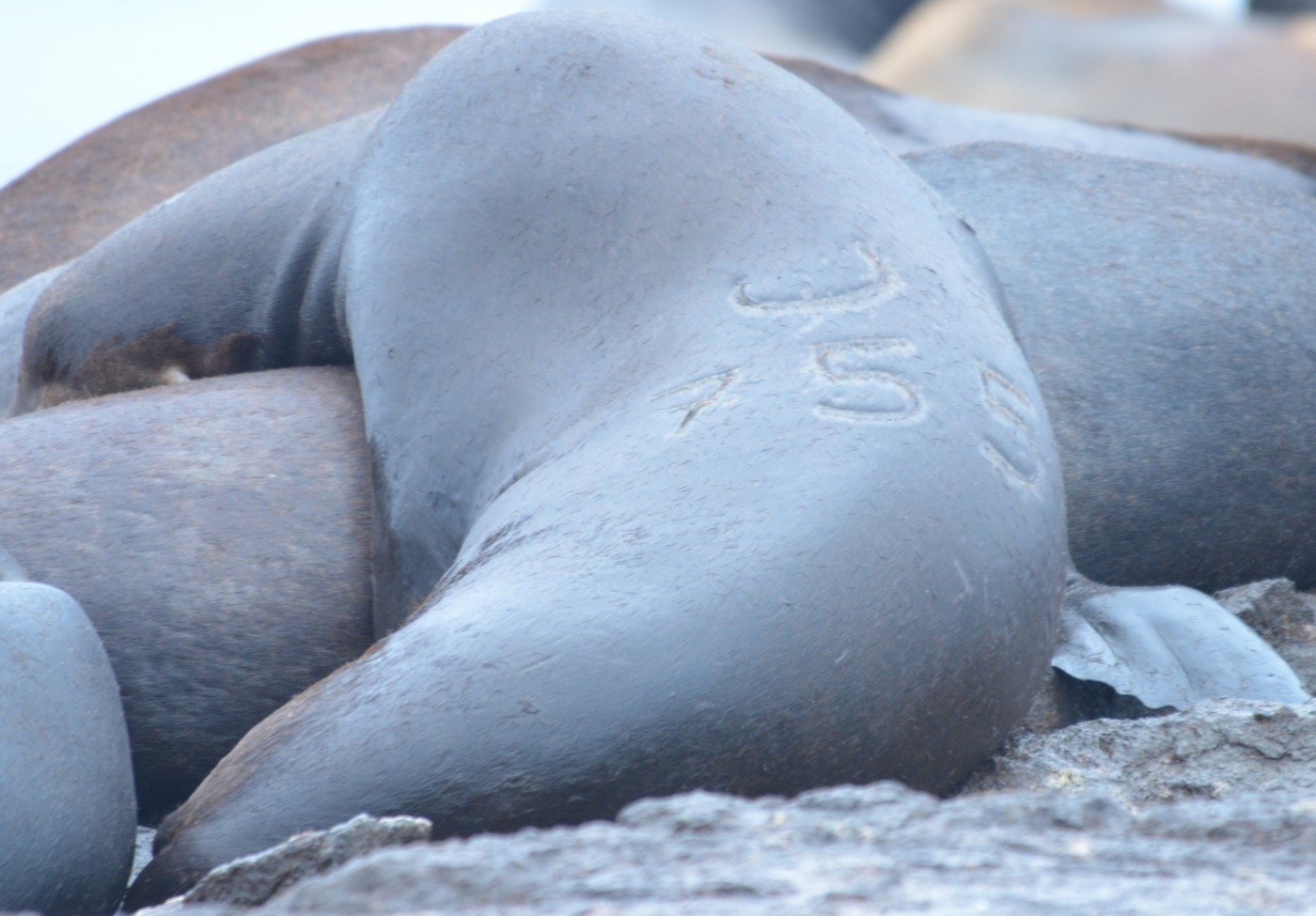
California Sea Lion with brand U755. The U is also a C and indicates the animal was branded as a weaner near the Columbia River.
- This male Stellers Sea Lion is having a deep sleep.
- Stellers Sea Lion with injury to neck that may be caused by plastic strapping ‘necklacing’ and cutting into its neck. Keep your plastic out of the sea.
- The wound on the sea lion is quite assymetrical, with a big wet fold of skin on the right side.
- California Sea Lion with brand U755. The U is also a C and indicates the animal was branded as a weaner near the Columbia River.
and sometimes only one or two blows. They are tremendously high, straight blows.
More and more Double Crested Cormorants arrive daily raising the total number of cormorants using the protected area to forage and roost. The adult Bald Eagle returns each morning and worries the gulls and cormorants.
Chores are routine and it is really great to have company.

